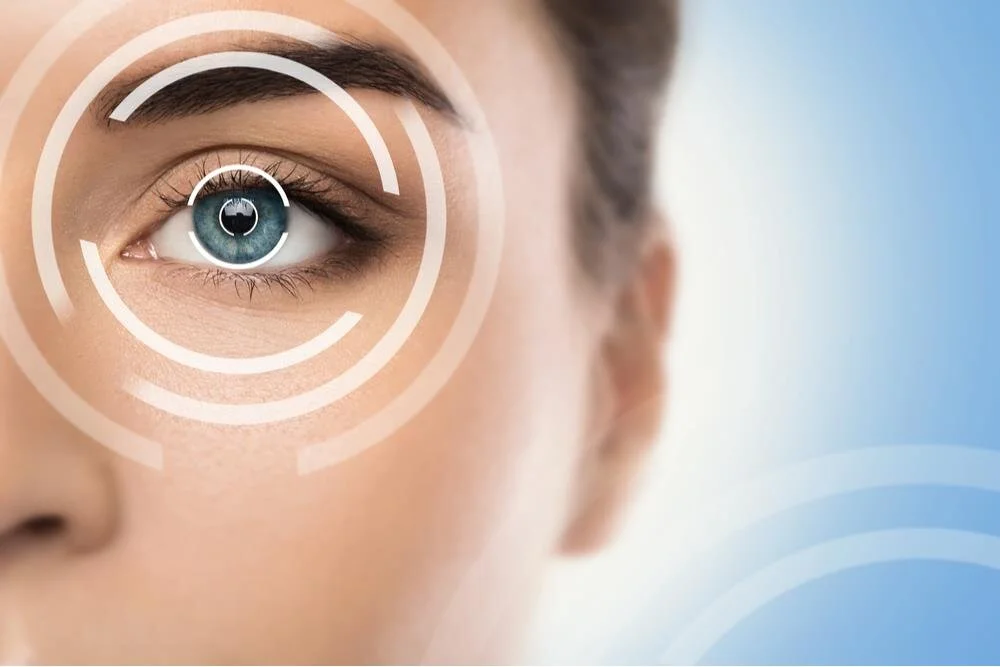
When the rays coming from a distant object cannot be focused on the retina, various refractive errors occur. These can be classified as myopia, hypermetropia, astigmatism and presbyopia. Refractive defects can occur due to changes in the anterior-posterior length of the eye and changes in the refraction of the cornea or crystal.
The absence of a refractive error in the eye is called "emmetropia", in which light rays are focused on the retina. In such a situation, a person can see without the need for aids such as glasses or contact lenses. The condition in which there is a refractive error is called "ametropia". A person with this condition can normalize their vision with glasses or contact lenses.
Corneal Deformities: The cornea is the clear outer layer at the front of the eye that allows light to enter the eye. If it is not formed properly, the light cannot be properly focused.
Eyeball size: The eyeball not being of normal size can prevent light from focusing properly. For example, long-sightedness can cause myopia, and short-sightedness can cause hypermetropia.
Genetic factors: Refractive defects are often inherited.
Environmental factors: Activities such as prolonged close work, computer use, or reading can increase the risk of myopia.
Aging: An age-related condition called presbyopia is closely related to the loss of elasticity of the eye's lens and can cause problems with clear near vision.
In myopia, the image is focused in front of the retina, so distant objects appear blurry.
In hypermetropia, the image is focused behind the retina, so the patient's main complaint is not being able to see clearly near, but in high hypermetropia, they also see far away blurry.
In astigmatism, blurred vision occurs due to the fact that the rays of the eye cannot create a single focal point on the retina. These people may experience heaviness in their eyes and headaches when they engage in activities that require attention (reading a book, looking at a computer screen, watching TV, etc.).
Presbyopia is a nearsightedness problem that occurs in the eye starting from the age of 40. With age, the elasticity of the crystal inside the eye decreases, as a result, it becomes difficult to focus and a person begins to be unable to see near.
Vision Test: Your visual acuity is tested with a table with different letters, numbers or shapes. This test helps determine if you have nearsightedness, farsightedness, astigmatism, or another eye defect.
Retinoscopy: In this test, a light source is pointed at your eyes and examines the reflections on your retina. This can help your eye doctor determine which direction your eyes have a refractive error.
Refractive error measurement: In this test, your doctor places a series of lenses in your eyes with a phoropter device and asks you to say which lens makes your vision clearer. This can help determine what type of refractive error you have.
Astigmatism Test: A keratometer or keratography device is usually used to detect astigmatism. These devices measure the curvature of the eye surface and determine whether astigmatism is present.
Fundus examination: Your ophthalmologist can look inside your eye by dilating your pupil and using an ophthalmoscope. This can help assess the health of your eye and identify any other potential problems.
Eye-glasses: Glasses are a widely used treatment for correcting refractive errors such as myopia, hyperopia, astigmatism, and age-related vision loss. Glasses are used as a tool to correct the patient's eye defect and provide clear vision.
Contact lenses: An alternative to glasses. These are small, clear lenses that mimic the natural shape of the eye and correct optical defects. Contact lenses are placed directly on the cornea of the eye and correct the eye defect, providing clear vision. There are different types of contact lenses such as hard lenses, soft lenses, gas permeable lenses, etc.
Refractive surgery: Refractive surgery aims to treat the cornea by changing its shape. There are different types such as Lasik (Laser-assisted in situ keratomileusis), PRK (Photorefractive keratectomy), Femtolasik, No-touch, Smile laser. These operations are carried out after being evaluated by an ophthalmologist and a surgeon according to the type and degree of the defect and the patient's eye structure, and determining the most suitable procedure to be applied.
The treatment method is determined depending on the type of eye defect, severity, age, lifestyle and personal preferences of the patient.
2024-07-17
2024-02-14
2024-02-14
2024-06-13
2024-06-13
2024-06-13
2024-06-14
2024-06-14
2024-06-14
2024-06-14
2024-06-14
2024-06-14
2024-06-14
2024-07-31
2024-07-31
2024-07-31
2024-07-31
2024-08-09
2024-08-12
2024-08-28
2024-09-05
2024-09-06
2024-09-14
2024-09-19
2024-09-19
2024-10-01
2024-10-02
2024-10-07
2024-10-21
2024-10-23
2024-10-29
2024-11-12
2024-11-18
2024-11-21
2024-11-26
2024-11-28
2024-12-03
2024-12-06
2024-12-10